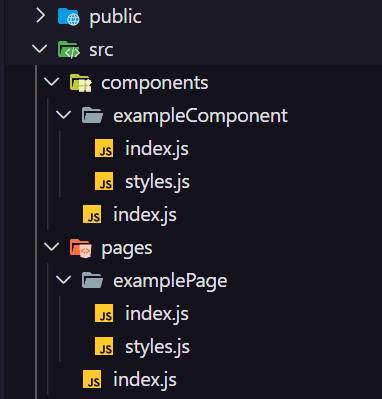two best practices to improve your project with this phenomenal library
The styled-components is a library for styling your application through JavaScript and is mainly used in the styling of React and React Native projects.
When we think about styling something, we should also be thinking about how to organize these styles, and for those just starting out in the frontend development world, these two practices are fundamental to writing and maintaining good code:
Create isolated styles
Whenever possible, create isolated styles.
Through this practice we have access to your component styles faster and this generates more productivity and makes maintaining your styles much easier.
A widely used practice in the market is to create the styles file together with the main file (index.js) of your component / page.
Naming your file styles.js or styled.js is also good practice. These two names are used a lot.
As an example, this is the structure of the style files I used in a template for React, on my GitHub:
Create semantic styles
Although styled-components is well known and adopted, it is common to see many grouping components that should have semantic scope being created as a simple div. It is extremely important that we do not forget to use tags correctly and consciously.
This is an example of how we create and export a styled component with styled-components:
export const ExampleComponentContainer = styled.div``;
We can access all other tags as styled properties, like: styled.header, styled.nav, styled.section, styled.article, styled.aside, styled.footer,
among others.
You can access the template mentioned above by clicking here:
 diegosilvatech
/
boilerplate-cra-typescript
diegosilvatech
/
boilerplate-cra-typescript
This project is a boilerplate for React project. This template was built with ReactJS and TypeScript.
Comment there what you think of this file structure :)







Top comments (4)
well, i name the folder after the component and the style file accordingly.
Example:
Folder is Header. I then name the style file header.style.ts - This makes sense to me, because I then can search for *.style.ts and get a complete list of all style files in my project.
Hi @larsejaas , thanks for the comment!
With the approach demonstrated above we also have easy access to all style files:
Yeah, I just always thought it would be a pain with a list where alle filenames was identical, but this looks fine actually when you have the path next to it - sweet!
...that's it?
Some comments have been hidden by the post's author - find out more